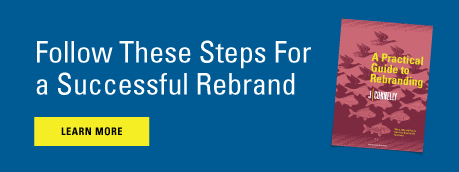 Your brand isn’t your logo, it’s who you are and what you stand for
Your brand isn’t your logo, it’s who you are and what you stand for
For years the Louis Vuitton or Coach logo on handbags was an important selling point for high-end consumers because it immediately telegraphed their status to anyone who knew enough to be impressed. But luxury brands that looked to extend their reach by offering products to a mainstream audience at multiple price points diluted some of that appeal when they began offering more affordable options and their products became more commonplace among mainstream shoppers. There’s really no allure in being a walking billboard for a handbag or designer label if everyone else can wear them too.
For the year ended this past June, one-third of the handbags sold in the US did not feature a visible logo. And while sales of handbags with no visible logos were highest among older consumers, the trend is being embraced by all demographic groups—baby boomers, millennials and Generations X, Y and Z. Some observers have labeled this phenomenon as “anti-branding,” but that may be an oversimplification. Consumers are still attracted to what these brands originally represented—well-made, high-quality goods that cost more because they were crafted using the best materials—they just no longer feel the need to advertise it to the world.
What Does Your Brand Represent?
And that’s a branding lesson for every business—your logo is the public expression of your brand, but it’s not the brand itself. A brand is something much deeper. A question you should regularly ask yourself (as well as your colleagues and your clients) is: What does my brand represent?
If the answers you get are not what you want to hear, then it’s probably time to refresh or even rebrand. You can hire a professional firm to help with that process if funds allow, but there are also many aspects you can handle yourself, or delegate to a trusted internal team.
Conduct a Brand Audit
One of the first steps is to conduct a brand audit which can help determine how well you are communicating your value to clients, prospects and internal audiences. Examine your website, marketing materials, logo and even the colors and fonts you use. Your audit should also include an analysis of competitors’ branding and the activity in the marketplace in which you compete.
After conducting this exercise, you should be better able to articulate exactly what it is you do and why you are different in a way that connects to your key audiences. That’s where your brand narrative starts and it should be central to all your communications efforts. Researchers at Emory University discovered that a compelling narrative actually rewires a person’s brain in a positive way, so having a good story to tell can help keep your brand top of mind. But don’t forget that your story should be about what you do and what problems you solve, not what you’re selling.
10 Signs Your Brand is in Good Shape
There’s a lot more to refreshing or relaunching a brand than what was covered here, but here are some indications in the form of a more digestible checklist that your brand is in good shape:
- People know how to talk about what you do and why you’re different.
- Your website actually engages prospects and generates valuable leads.
- Your clients deeply understand everything you do and how that supports their success.
- Your brand looks bigger, better and more progressive than your competition.
- You can target your services and expertise to defined consumer groups, while still promoting all the various things you do.
- You are seen as an authoritative leader in your field, actively engaged in the evolution of your industry.
- The right kinds of clients are able to find you and more of them seek out your expertise.
- You and your team are frequently invited to share your viewpoints—in person, online and in published pieces.
- Great job candidates seek you out because they’ve bought in to your larger mission.
- Your company continues to grow—increasing sales, market share or both.
If those items don’t ring true, then it’s probably a good idea to put rebranding on the agenda.





Let’s Connect
Ready to build, grow, manage and protect your brand? Complete the form below to discuss how we can help.